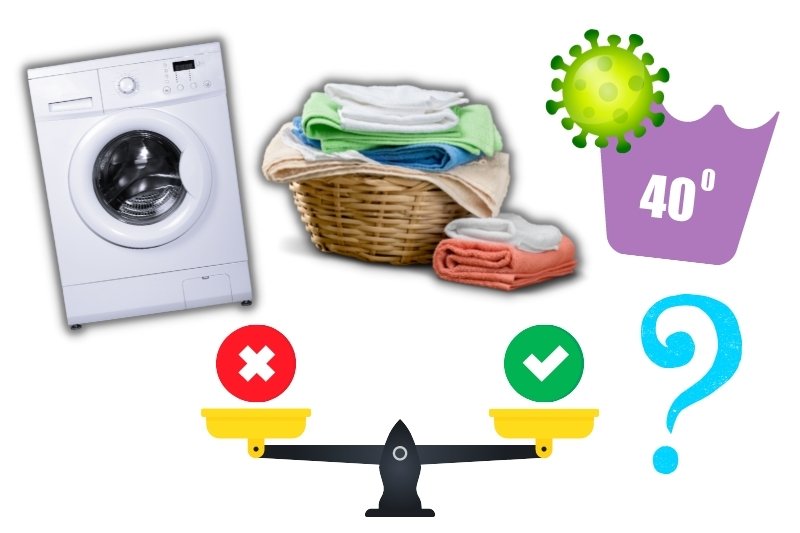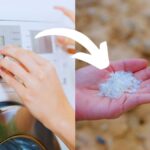There are so many myths, hacks and genuine stories to be had when it comes to laundry. So much so, deciding what’s fact and fiction can be a nightmare – might even be a costly one too!
So, here are the 16 biggest laundry myths debunked! And I’ve added in the facts for you to enjoy too!
Myth 1: You Don’t Need to Clean Your Washing Machine
Fact: You do need to clean your washing machine!
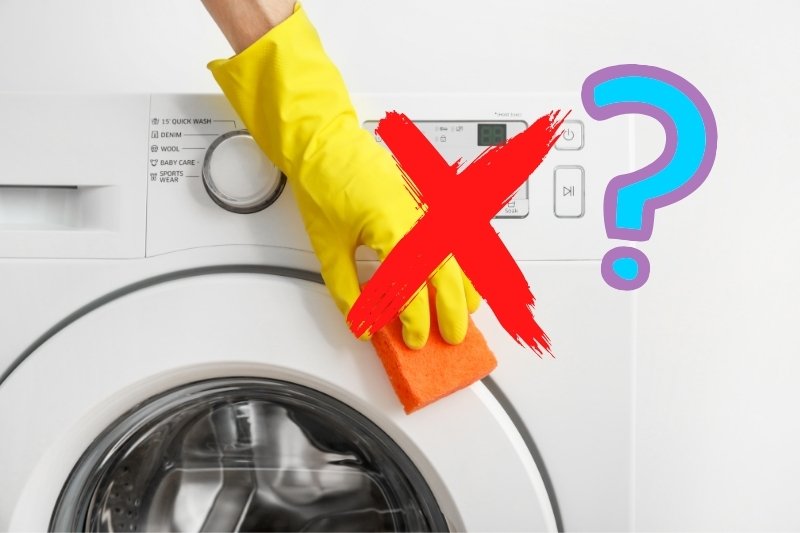
It’s very easy to assume that because you wash dirty clothes in your washing machine, and then all of those clothes come out clean, that you don’t need to wash your washing machine at all. It’s just as simple to assume that laundry detergent cleans the appliance out too.
But, this way of thinking is actually wrong.
While your washing machine may look clean it is, in fact, probably riddled with all manners of dirt. The grime that’s left behind after every cycle will slowly make its way into all the small areas of your washing machine, from the drum itself, to the seal, and from the filter to the hose.
If you don’t actually clean your washing machine out, using the proper tools and products, it will in time start to degrade and smell. Eventually, parts will completely stop working and your washing machine will no longer work.
Now you know that you do need to maintain your appliance, you can find out how to completely clean your washing machine in our guide.
Myth 2: All Stains Can Be Removed by Using One Method Only
Fact: Each stain needs to be treated in its own way!
A stain can be caused by anything from food and drink, to pens and deodorant. So, in order to remove a stain, you must understand what the stain is made up of. Is it an oily substance, for example?
Once you can answer this question you can start removing the stain with the correct tools and potions.
There is not a ‘one method eradicates all stains’ method. Most stains have to be dealt with over a period of time. But it would be very cool if this myth were true!!
Myth 3: Underwear Should Only Be Washed by Hand
Fact: Most under garments can be washed in a washing machine!
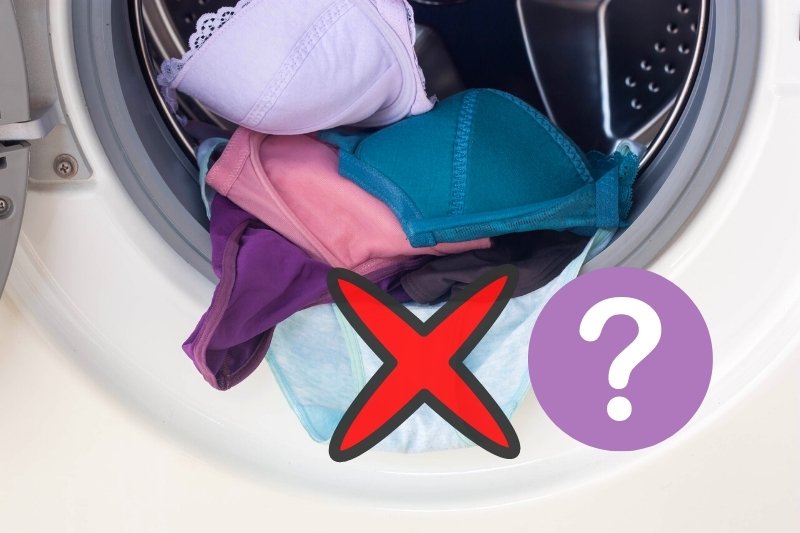
It is not essential to wash underwear by hand. Just check that the clothing tag doesn’t state that “handwashing is the only way” beforehand, and if the tag doesn’t say this, you can throw your underwear into the washing machine.
Most types of underwear can be washed in a washing machine and then dried in a tumble dryer. However, it is better to choose a delicate wash setting and a low temperature for drying these items.
And if you’re concerned about wires popping out, you can always use a delicates bag to keep your garments safe.
Myth 4: The More Dryer Sheets, the Better
Fact: Excess laundry sheets can block up a dryer’s lint filter and can leave an odour behind.
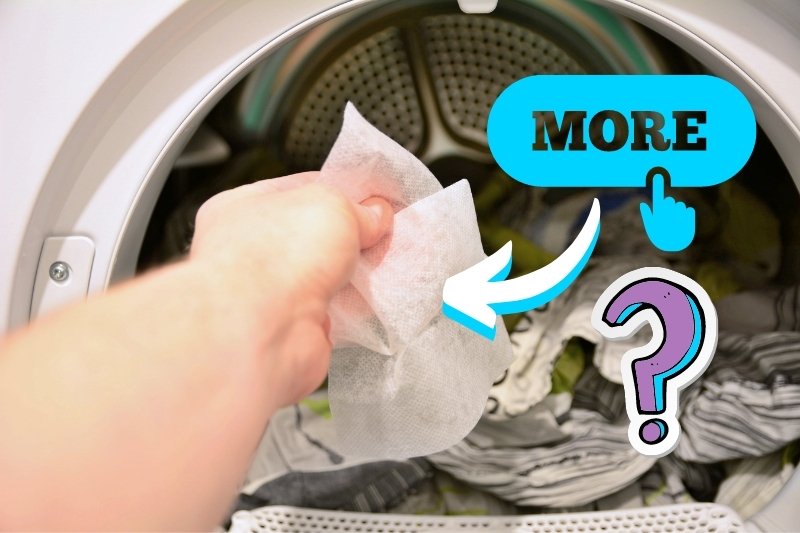
The main reason why people use dryer sheets is because they want to limit the amount of static build up that gets onto their clothes. So, some people think that adding more and more dryer sheets to a load of laundry will prevent static from building up.
Sadly, that isn’t quite true.
While there may be a reduction in static, there will probably be a pongy odour left behind in the dryer and the lint filter may become overly clogged up. This isn’t really the desired end result, and, in fact, it may just create more work for the tumble dryer user.
Myth 5: The More Detergent, the Better
Fact: Too much detergent is bad for your clothes!
Excess detergent may sound like the perfect solution to cure all the caked-on dirt that’s covering your laundry. But, sadly, too much detergent isn’t going to be your superhero!
It’s more likely to become your nemesis.
You see the problem with adding too much detergent to a load is that the detergent doesn’t get used up and washed away correctly. This means that detergent residue stays on your clothes long after the wash cycle has ended.
To get rid of this problem you have to re-wash your clothes without detergent, which is needless extra work. And you may have to clean your washing machine out because of all the potential excess foam that’s been created. If you don’t manage this situation as soon as possible you may also end up with a blocked hose.
Just stick to the amount it says on the pack! Follow our guide on how much laundry detergent to use for some tips.
Myth 6: Hand Soaps Can Clean Clothes Too
Fact: Not really, it’s all in the name.
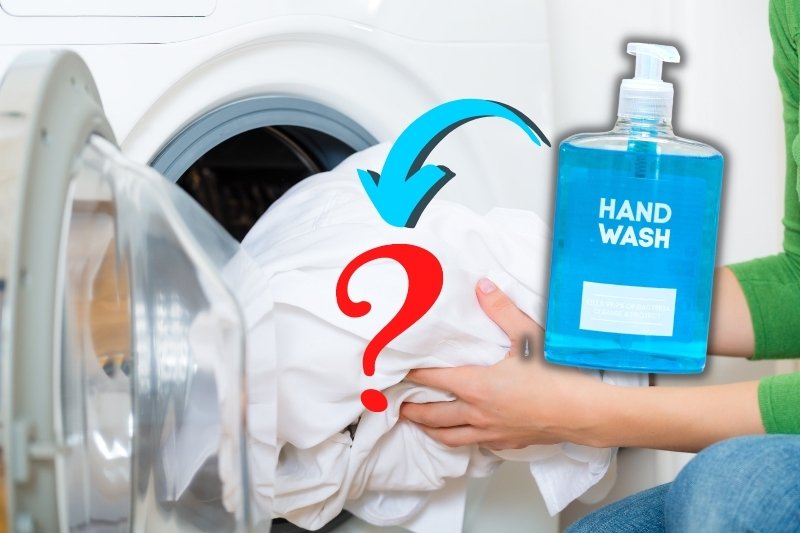
It may sound like a great party trick to show your friends but the reality is, hand soap is there to clean your hands and not your clothes.
While hand soap isn’t going to have any horrid chemicals, it’s not ideal to wash clothes with it because not all materials will react well to it. This could result in you ruining your best top, or soiling your favourite jeans. Not to mention the impact this may have on the intricate workings of your washing machine.
So, if you’re thinking about doing this, just don’t.
Myth 7: Laundry Only Needs Two Piles: Coloured and White Clothes
Fact: Nope, you should wash all clothes by following the instructions on each individual clothing tag. Then you should split the clothes up into similar washing piles based on the instructions you’ve read.

While it’s good practice to keep your red socks away from your white shirts, you should also take care of what type of clothes you’re washing together.
For example, if you’re doing a delicate wash because you’ve got a lot of synthetics to be cleaned, you should aim to only put clothes of this nature into the appliance at the same time. Harder clothes, like denims, may damage these delicate items.
Myth 8: You Can Save Money by Filling the Washing Machine to its Max Capacity
Fact: Not true! Your clothes won’t be cleaned properly and you’ll waste time and money rectifying the issue!
While it’s true that washing machines have capacity limits, you shouldn’t aim to fill the machine up every single time to the maximum limit. This will put unwanted strain on the appliance and it could knock the machine off balance.
You should always be able to fit a hand between the top of the pile of laundry in the drum and the roof of the washing machine. This way you’ll know that your items have enough space to be agitated as they’re going through each cycle. If you can’t fit your hand on top of the laundry, you have overloaded your machine.
Myth 9: The Hotter the Water, the Better
Fact: Nope, hot water can ruin some materials!
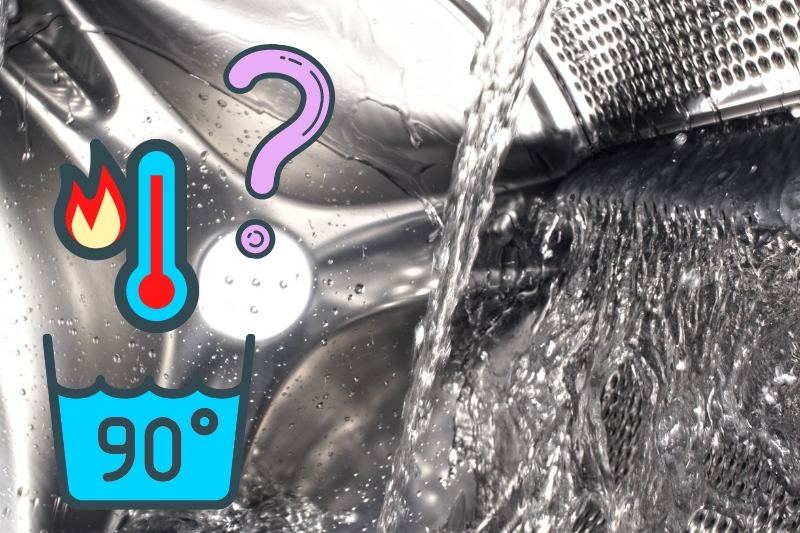
Not all clothes and items can be washed in extreme temperatures because they’ll get damaged.
If you’re not sure what garments can be washed on what setting, just have a quick peek at the tag and you’ll be told exactly how to wash the item.
Also, hot water alone won’t clean all the bacteria off your clothes, you usually need a special laundry cleaner to do this. So, you may not actually have laundry that’s amazingly clean and bacteria free.
Myth 10: You Must Wash Clothes After Wearing Them Once
Fact: Nope, you’re probably over washing them if you do this!
If your clothes aren’t obviously dirty and they’ve not been through a workout with you, then you should ask yourself if your items really need a wash. You’ll probably find that most clothes can be worn a few times before they need washing.
In the long run this will help the lifespan of your items, keep your costs down and it’ll save you some energy!
Myth 11: Zips and Buttons Must Be Done Up Before an Item Is Washed
Fact: Clothes need to be able to move freely in the drum.
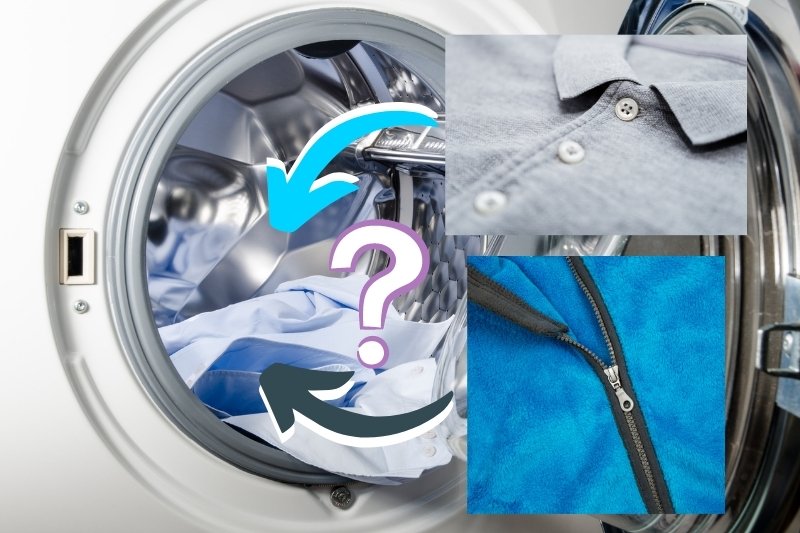
While it may sound like you’re keeping your clothes all neat and tidy as they’re being washed, you’re probably hindering the cleaning process more than you think.
You see, as clothes are being washed, they need to move around freely, and they must stretch and twist in different directions. If the buttons on a shirt, for example, are done up, the shirt becomes taught and it cannot move as fluidly in the washing machine.
This puts unwanted and unnecessary strain on the material and it may impact its lifespan, if you do this enough.
Myth 12: Germs Don’t Survive When Washed At 40℃
Fact: Germs can survive at 40℃, and if you only plan on running wash cycles at 40℃ you should use a specialised cleaner to remove germs from your laundry.
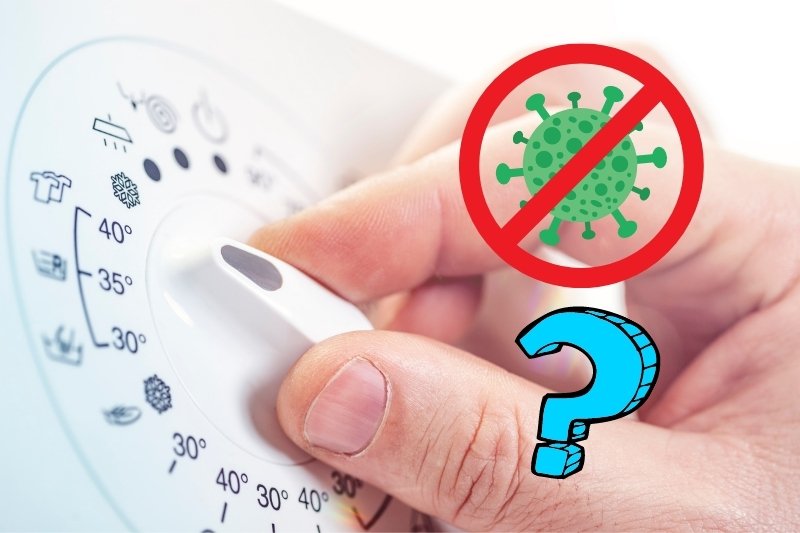
Although it’s good to wash clothes at lower temperatures, like 30℃ and 40℃, detergents and these water temperatures may not be able to remove as many germs as you’d like them to from your laundry.
In order to remove germs from your washing, but to carry on using a low water temperature, you need to use an antibacterial laundry cleaner to eradicate those pesky germs once and for all.
A laundry cleaner, like Dettol Antibacterial Laundry Cleaner would be ideal in this sort of situation. It can be used at water temperatures at 30℃ and you can use it in normal washes too.
Myth 13: Jeans Need to Be Washed Regularly
Fact: Excess washing can damage the fibres, the colour and the quality of your jeans!

Jeans are made from hard-wearing material that doesn’t really need to be washed that often. In fact, if you over-wash your jeans you may actually be causing more damage than you think to the denim. Excess washing can impact the fibres in your jeans and can make the colour fade.
Unless your jeans are obviously dirty, or you feel that they do need to be cleaned, there’s no reason why they need to be washed after every single wear.
Myth 14: Ignoring Clothing Labels Is the Way Forward
Fact: Nope! They’re there for a reason, so read them and stick to them.
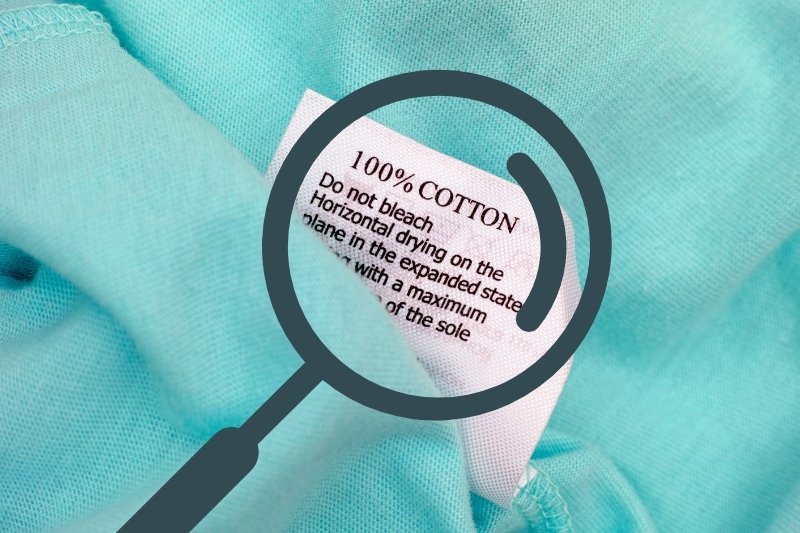
Every item of clothing you own has a care label attached to it. And on this care label you’ll find instructions on how to wash the item and how to dry it. This information is given to us all for a reason, and that reason is…
Every item has to be washed in a specific way, so that it doesn’t get ruined. Clothes are made to stick around for a period of time, so why ruin items after just one wash – read the labels and wash clothes correctly.
Myth 15: There’s a Sock Thief in Every Home
Fact: Your socks are probably under the seals in the washing machine!

A stray sock is a very common sight in most homes, and it’s led to one of the greatest myths of all…
The Sock Monster!
While it’s a really fun idea, sadly, it’s not true. The truth is, socks are either lost around the house as they’re being transported to and from the washing machine, or the washing machine has eaten the sock up.
Not literally, of course. But your sock could be stuck under the seal around the washing machine’s door.
You see as the water and drum move around, agitating you laundry, a sock may somehow end up being trapped and pulled under the seal around the door. At the end of the wash, you may be none the wiser, but you’re one sock down!
This, believe it or not, happens more than you think with other items, like Colour Catchers getting caught under the seal.
Now you know where your missing socks might be, it’s time to go and check the seal out! Keeping the seal free from unwanted guests will also help its lifespan!
Myth 16: You Only Need to Wash Clothes That Are Visibly Dirty
Fact: All clothes need to be washed!
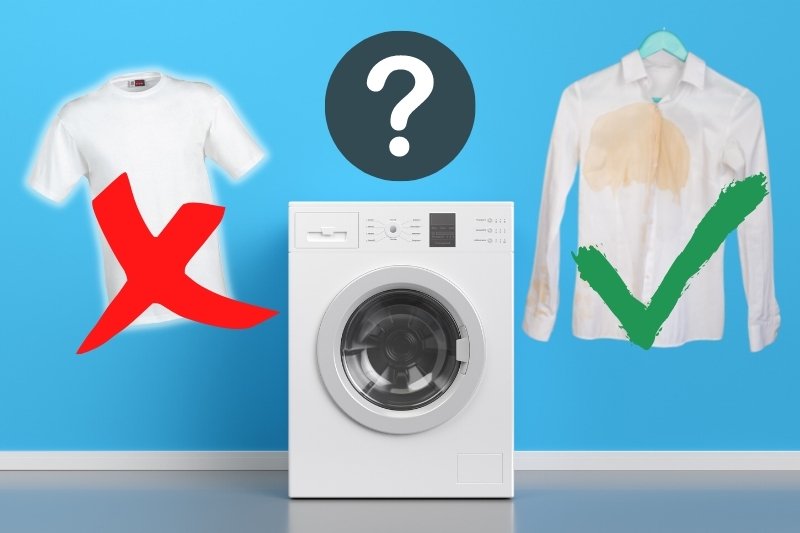
Every item of clothing we wear gets dirty, whether it’s visible dirt like mud, or invisible dirt like sweat and deodorant marks. What’s important to remember is that all clothes need to be cleaned at some point.
While you don’t necessarily have to wash every item of clothing after a single use, you should keep in mind that once you’ve worn an item a few times it will need to be washed. Plus, some items will inevitably need to be washed after a single use.
It’s vital that you do wash your clothes because the human body creates a lot of oils that need to be cleared off clothes, there are germs in the air that can get onto clothes, and washing clothes can help them to keep their shape.
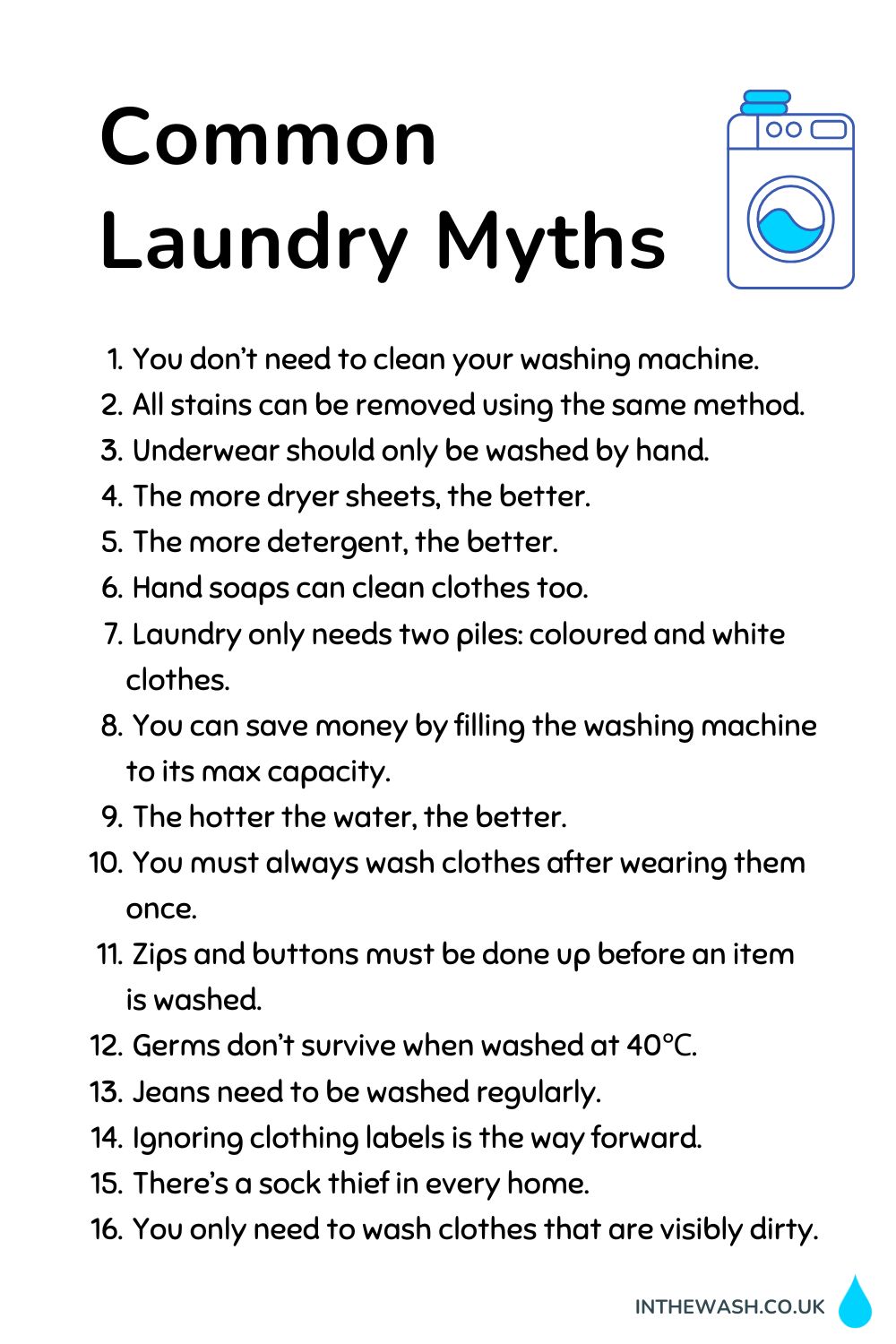

Bethan has a passion for exploring, reading, cooking and gardening! When she’s not creating culinary delights for her family, she’s concocting potions to keep her house clean!
